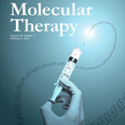Volume 10, Issue 2: February 2021
Editorial Team
Edith Pfister, Ph.D. – Editor, The Vector
Karen Bulaklak, Ph.D. – Associate Editor, The Vector
Jon Brudvig, Ph.D. – Junior Editor, The Vector
Inside This Issue
Leadership Message
Breaking Through
From Molecular Therapy
Society News
Career Center
Public Policy
Industry News
Leadership Message
Membership Discounts Now Available for Residents of Low-Income Countries

Hello, ASGCT Members,
At ASGCT we are deep in planning mode for the 24th Annual Meeting, and we hope you’re all looking forward to a week of fantastic programming. We certainly are! We have scheduled a large number of presentations from both up-and-coming investigators in gene and cell therapy as well as some of the most respected leaders, including Nobel Prize winner Jennifer A. Doudna, Ph.D., who will be giving a “fireside chat” on the first day of the meeting. If you register now to secure your spot, you’ll receive the lowest rate and you can also get a free VIP Pack, which we are making available to the first 1,000 registrants with a valid U.S. mailing address.
On the membership front, I’m excited to let you know that we’re going to be offering reduced membership rates for people residing in countries with low- and lower middle-income economies. Eligible countries are determined by the World Bank classification, which you can view here. More information about this new membership category will be available soon.
In other membership news, I would like to remind you to renew your ASGCT membership. Renewing your membership ensures you’ll maintain your exclusive benefits, like access to the latest research in the Molecular Therapy family of journals and at the Annual Meeting, educational programming, and engagement opportunities year-round. Stay connected to the largest global community of gene and cell therapy researchers and renew today!
Finally, please check out a weekly series recognizing Black History Month on our blog! The series will introduce ASGCT’s new Diversity and Inclusion Committee, spotlight some of its members and initiatives, and discuss current and future gene therapy research for the treatment of diseases like sickle cell that predominantly affect minority populations.
Stay safe!
Sincerely,
Stephen J. Russell, M.D., Ph.D.
ASGCT President
Breaking Through
Enforced Dimerization Between XBP1s and ATF6f Enhances the Protective Effects of the Unfolded Protein Response (UPR) in Models of Neurodegeneration
Vidal RL, Sepulveda D, Troncoso-Escudero P, Garcia-Huerta P, Gonzalez C, Plate L, Jerez C, Canovas J, Rivera CA, Castillo V, Cisternas M, Leal S, Martinez A, Grandjean J, Lashuel HA, Martin AJM, Latapiat V, Matus S, Sardi P, Wiseman RL, Hetz C
DOI: https://doi.org/10.1016/j.ymthe.2021.01.033
Summary by Karen Bulaklak, Ph.D.
The endoplasmic reticulum (ER) plays a central role in maintaining the dynamic processes for proper folding and trafficking of proteins, known as proteostasis. Stress conditions can result in aberrant protein folding, impairing ER-regulated proteostasis. Chronic ER stress has been observed in neurodegenerative diseases associated with abnormal protein aggregation, such as Parkinson’s and Huntington’s diseases. Thus, restoring proteostasis presents an attractive therapeutic pathway for such conditions.
Under ER stress, cells activate the unfolded protein response (UPR), which works to attenuate protein translation and upregulate protein quality control genes and degradation machinery. In a recent report, Vidal et al present a novel therapeutic strategy using two key transcription factors involved in UPR signaling, ATF6f and XBP1s. While each of their roles in the UPR have been studied individually, increasing evidence suggested that the two factors can physically associate and cooperate to bind related target genes to remodel the ER proteostasis network. To study this relationship further, the researchers generated a fusion protein using a linker to create a heterodimer of active XBP1s and ATF6f called “UPRplus.” In a series of in vitro experiments, different heterodimer constructs were compared for expression and ability to upregulate UPR target genes. They observed that UPRplus induced similar or higher expression of target genes HSPA5, CREDL2, and SULF1, compared to unfused XBP1s and ATF6f. In addition, they found that the intact DNA binding domains for each individual monomer are necessary for reporter gene expression controlled by a UPR-responding element (UPRE) and increase levels of the same UPR target genes. This suggests that each XBP1s and ATF6f work separately to induce downstream gene expression. In two cell-based models of protein aggregation, the ability of UPRplus to decrease levels of high molecular weight (HMW) protein was examined. Remarkably, UPRplus significantly reduced both HMW polyQ79-GFP and α-synuclein compared to co-expression of either monomer. Proteomic characterization also revealed distinct patterns of expression between UPRplus and XBP1s or ATF6f alone. Knockdown of certain target genes demonstrated that protein aggregation increased in culture, further supporting the heterodimer’s mechanism of action. Finally, UPRplus was packaged into AAV and delivered directly to brains of Huntington’s and Parkinson’s mouse models. UPRplus reduced levels of aggregate mHtt protein and prevented dopaminergic neuronal loss compared to XBP1s or ATF6f alone.
In summary, Vidal et al present a creative approach to induce the reparative UPR pathway, further supporting potential as a drug target for neurodegenerative disease. While the utility of targeting protein aggregates in these conditions is not fully understood, further insight into driving factors and alternative strategies will only help in the search for effective therapies.
From Molecular Therapy
 This month, read a special issue of Molecular Therapy devoted to the topic of clinical development of gene and cell therapy. The first therapeutic use of gene transfer occurred in a trial launched in September 1990. Since then, the field has had its ups and downs. Three decades later, gene therapy has established itself as a viable therapy for numerous indications. Read more of the cover story here.
This month, read a special issue of Molecular Therapy devoted to the topic of clinical development of gene and cell therapy. The first therapeutic use of gene transfer occurred in a trial launched in September 1990. Since then, the field has had its ups and downs. Three decades later, gene therapy has established itself as a viable therapy for numerous indications. Read more of the cover story here.
We’re now accepting research papers for a special issue of Molecular Therapy on expanding the scale and scope of therapeutic gene editing! The submission deadline has been extended to March 31. Submit your paper now!
You can also submit your papers for a special issue of Molecular Therapy: Oncolytics on combination gene and cellular immunotherapies. These immunotherapies pose exciting regulatory challenges to the field and we’ll highlight preclinical, clinical, and regulatory advances in this special issue. More information on topics and article types is available here. Submit your paper by August 1.
Society News
Register for #ASGCT21 to Join Nobel Prize Winner Jennifer Doudna, Ph.D.
We can't wait to welcome Jennifer Doudna, Ph.D., the co-recipient of the 2020 Nobel Prize in Chemistry, to the 24h Annual Meeting in May! Dr. Doudna will participate in a fireside chat on May 11, the first day of the meeting. Register now to learn from Dr. Doudna and many other leaders in the field.
Renew Your Membership to Maintain Year-Round Benefits
As an ASGCT Member, you have exclusive opportunitites to engage with and contribute to the largest and most inclusive community of gene and cell therapy professionals. Remember to renew your membership so you can stay connected to this community through 2021! In addition to access to the latest research and advancements in the field, members receive the lowest rates during the Annual Meeting, so make sure you renew today!
Career Center
Are you looking for a job in the field of gene and cell therapy? Check out the new ASGCT Career Center for great opportunities with industry, government, and academic organizations. Sign up to receive alerts for open jobs in your area.
If you're from a recruiting institution, advertise in the Featured Jobs section to target the 4,000+ audience of The Vector.

Featured Jobs
Public Policy
Pre-Meeting Workshops Focus on Hot Topics in the Field
ASGCT has a full slate of in-depth Pre-Meeting Workshops on May 10 focused on policy, clinical development, and other issues in the field. Workshop registrants will also have access to our networking chat lounge to connect with other attendees.
Regulatory professionals will not want to miss Recent Developments in Global Regulation of Gene Therapies, planned in collaboration with the European Society of Gene & Cell Therapy. New this year, Standards in Gene Therapy and Genome Editing, co-hosted by the National Institute of Standards and Technology, the Standards Coordinating Body, and the United States Pharmacopeia, will explore recent and ongoing progress in standards development and ways to provide input.
The Issues in Market Access workshop will share insights from investors, payers, policymakers, and patients on the growth of the industry, learnings from initial gene and cell therapy launches, and potential solutions to facilitate patient access to approved therapies.
Investigators in translational research looking to partner with industry or venture capital should attend the Early-Stage Development workshop, which will provide guidance on successfully advancing preclinical research to an IND application and initiation of clinical trials. Transitioning from Academics to Industry is geared towards those thinking about moving into the industry side of the field. This interactive workshop will include personal perspective sharing from experienced industry professionals, including Gallia Levy, M.D., Ph.D.; Adora Ndu, Pharm.D., J.D.; and Kevin Williams, M.D., J.D.
For the first time, ASGCT is offering a workshop for individuals with genetic disorders, their families, and other advocates. Patient Advocates’ Role in Advancing Gene Therapy will address topics including the development of effective partnerships, and challenges and opportunities in gene therapy development.
Check out the list of confirmed speakers for each workshop and register to attend here. With our all-virtual workshops, you can sign up for as many as you like and watch them all on demand for 30 days after the Annual Meeting.
Membership Discounts Available for Residents of Low- and Low Middle-Income Countries
As part of ASGCT’s efforts to expand its mission outside of the United States, it is now offering all the benefits of membership at discounted rates to individuals living in countries with low- or lower middle-income economies as classified by the World Bank. Members residing in a country designated as a lower middle-income economy, including Ukraine, India, and many others, will be eligible for a 75 percent discount on membership dues. Members residing in a country designated as a low-income economy will be eligible for a 90 percent discount on membership dues.
Industry News
Interested in advertising in The Vector?
View the Rate Sheet